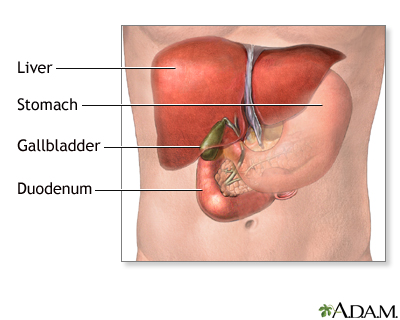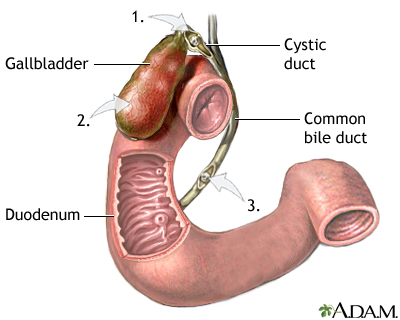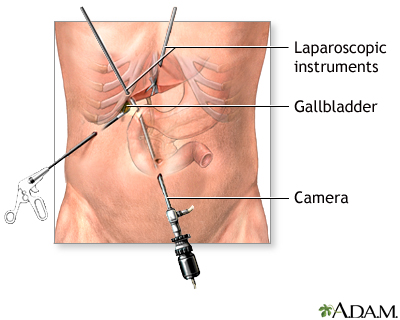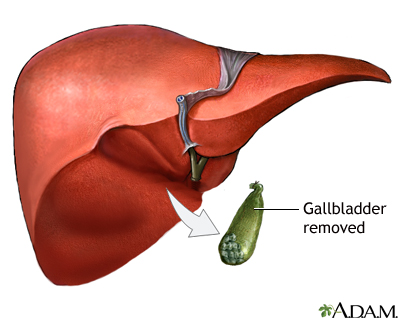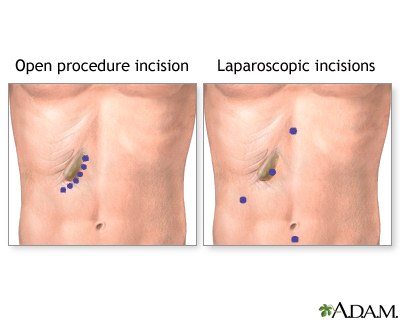Gallbladder removal
| Normal anatomy |
The gallbladder is located in the abdomen, on the right side, underneath the liver. The gallbladder stores bile produced by the liver and delivers it to the first part of the small intestine (duodenum), where it aids in the digestion of fat. The cystic and common bile ducts connect the gallbladder to the duodenum. Bile passes through these ducts from the gallbladder to the duodenum.
|
| Indications |
Gallbladder surgery is done to treat gallbladder disease, which consists predominantly of the formation of gallstones in the gallbladder (cholelithiasis) that can cause:
- Obstruction of the cystic duct leading to severe abdominal pain (biliary colic)
- Infection or inflammation of the gallbladder (cholecystitis)
- Blockage of the biliary duct leading to the duodenum (biliary obstruction)
- Blockage of the duct leading from the pancreas to the duodenum (pancreatitis)
In these situations, removal of the gallbladder (cholecystectomy) is indicated.
|
| Incision |
Most gallbladder surgery today is done using laparoscopic surgical techniques, in which narrow instruments are introduced into the abdomen through small incisions. With the patient under anesthesia, the abdomen is inflated with carbon dioxide. Next, a fiberoptic camera is inserted into the abdomen near the umbilicus (navel). Instruments are inserted through 2 more incisions. The gallbladder is found, its attachments are cut, and the gallbladder is removed.
|
| Procedure |
If the gallbladder is extremely inflamed, infected, or has large gallstones, the abdominal approach (open cholecystectomy) may be recommended. A small incision is made just below the rib cage on the right side of the abdomen. The liver is moved to expose the gallbladder. The vessels and tubes (cystic duct and artery) to and from the gallbladder are cut, and the gallbladder is removed. The tube (common bile duct) that drains the digestive fluid (bile) from the liver to the small intestine (duodenum) is examined for blockages or stones. A small tube may be left in for several days to drain out fluid if there is inflammation or infection.
|
| Aftercare |
Most patients who undergo laparoscopic cholecystectomy can go home the day of surgery or the next day and resume a normal diet and activities immediately. Most patients who undergo open cholecystectomy require 3 - 5 days of hospitalization and are able to resume a normal diet after 1 week and normal activities after 4 - 6 weeks.
|

|
Review Date:
12/22/2011
Reviewed By:
Harvey Simon, MD, Editor-in-Chief; Associate Professor of Medicine, Harvard Medical School; Physician, Massachusetts General Hospital. |
The information provided herein should not be used during any medical emergency or for the diagnosis or treatment of any medical condition. A licensed medical professional should be consulted for diagnosis and treatment of any and all medical conditions. Links to other sites are provided for information only -- they do not constitute endorsements of those other sites. © 1997-
A.D.A.M., Inc. Any duplication or distribution of the information contained herein is strictly prohibited.



